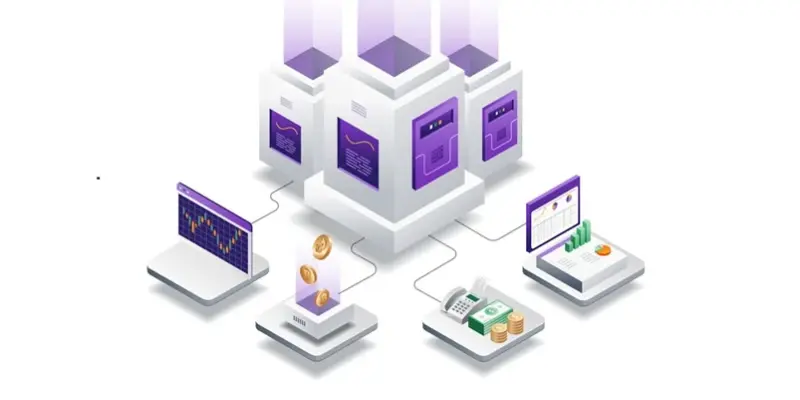The cryptocurrency market is often fraught with volatility, but for Avalanche (AVAX), a leading layer 1 blockchain network, recent developments indicate a potential substantial upward movement. Analyst Ali Martinez has forecasted a significant 40% surge for AVAX if it manages to surpass the $33-$37 price level. Should AVAX be successful in breaking through this critical price point, it could pave the way towards even higher values. However, failure to overcome this barrier may lead to a decline, with crucial support levels at $34.18 and potentially falling further to $29.17, $24.69, or even down to $22.18. Martinez’s analysis stems from a descending triangle pattern observed on a four-hour chart, suggesting a high likelihood of this scenario unfolding in the near term. TradingView visuals have been employed to illustrate AVAX’s price trends and movements, providing a clearer picture for investors.
Currently, AVAX’s price action remains at the lower end of the Bollinger Bands, indicating a prevailing bearish sentiment and the possibility of retesting the lower trendline. This is substantiated by a remarkable 52.69% surge in trading volume over the past 24 hours, which underscores robust market interest. With a market cap of $14.89 billion, the cryptocurrency is currently ranked as the 12th-largest digital currency. Technical indicators, such as the Relative Strength Index (RSI) standing at 44.03, highlight the higher selling pressure compared to buying pressure, mirroring market uncertainty and stagnancy. All these factors together create a complex terrain for AVAX, requiring a significant push in trading volumes to confirm a reverse trend potentially leading towards a bullish outlook.
The Descending Triangle and Market Sentiments
The justification for Martinez’s prediction is grounded in the descending triangle pattern exhibited on AVAX’s four-hour chart. This pattern indicates a probability of a breakout, suggesting a high likelihood for AVAX to achieve the predicted price surge when reviewed alongside other technical indicators. The descending triangle is typically a bearish formation but, in conjunction with a breakout, can forecast a trend reversal, turning tides in favor of a bullish movement. Additionally, AVAX’s movement within the Bollinger Bands reinforces Martinez’s forecast. Positioned at the lower spectrum signifies a hesitance among investors, potentially leading to a retest of the lower trendline. Nevertheless, a climb beyond this set boundary could invigorate trading activities, increasing investor confidence.
To further scrutinize, analyzing the significant 52.69% surge in trading volume over the past 24 hours reveals an intensifying market interest in AVAX. This metric often serves as a precursor to a trend reversal, implying traders’ anticipation of higher price levels. Coupled with a market capitalization of $14.89 billion, this volume increase adds weight to the narrative of a potential price leap. Yet, the RSI currently sits at 44.03, a value suggesting higher selling pressure over buying activity. This condition indicates lingering uncertainty within the market, hinting at possible stagnation if not addressed by substantial buy-ins. Thus, a collective look at these variables presents a scenario where market sentiment hovers between cautious optimism and bearish apprehension.
Importance of Trading Volumes and Technical Indicators
While the current market status exhibits certain bearish tendencies, the notable trading volume amplification provides a mitigating aspect that could alter this perception. The emphasis on higher trading volumes in validating a reversal trend cannot be overstated. In the context of AVAX, despite recent accumulation, the levels have shown signs of distribution. This reflects fluctuations in price direction suggesting that while traders are looking for entry points, there is a resilience seen in holding back until more favorable indicators show up. Such dynamics underscore how pivotal trading volumes are in anticipating future price changes.
Adding another layer of analysis, the Relative Strength Index (RSI) at 44.03 mirrors the market’s current condition, revealing higher selling pressure. This metric usually helps gauge whether an asset is overbought or oversold, bridging the link between market psychology and price action. Given the present scenario, AVAX sits on a delicate balance — at a transitional junction where careful monitoring is paramount. The RSI level clearly illustrates that a notable increase in buying pressure could substantially impact the price, pushing it above the critical $33-$37 barrier. As such, investors and traders must closely watch these technical indicators to navigate upcoming market movements effectively.
Conclusion
The cryptocurrency market is notoriously volatile, but promising signs suggest Avalanche (AVAX), a leading layer 1 blockchain network, may witness substantial growth. Analyst Ali Martinez predicts a significant 40% surge for AVAX, provided it breaks the $33-$37 price range. Overcoming this crucial level could propel AVAX to even higher values, while failure to do so may trigger a decline. Crucial support levels include $34.18, with potential drops to $29.17, $24.69, or $22.18. Martinez’s forecast is based on a descending triangle pattern visible on a four-hour chart, hinting at a high probability of this scenario unfolding soon.
TradingView visuals clarify AVAX’s price trends for investors. Currently, AVAX trades at the lower end of the Bollinger Bands, indicating bearish sentiment and possible retesting of the lower trendline. This is backed by a notable 52.69% increase in trading volume over the past 24 hours, showing strong market interest. With a $14.89 billion market cap, AVAX ranks as the 12th-largest cryptocurrency. Technical indicators such as a Relative Strength Index (RSI) of 44.03 show higher selling pressure, reflecting market uncertainty. AVAX needs a significant boost in trading volumes to confirm a potential bullish reversal.

